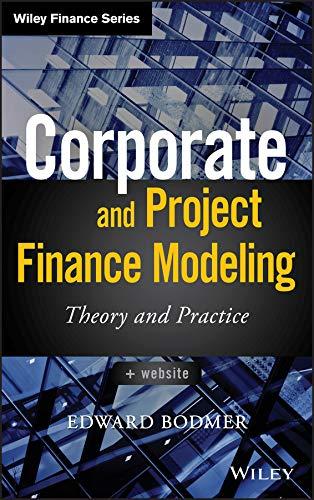Answered step by step
Verified Expert Solution
Question
1 Approved Answer
The second picture Chegg sent in the wrong answers. J. Smythe, Inc., manufactures fine furniture. The company is deciding whether to introduce a new mahogany


The second picture Chegg sent in the wrong answers.
J. Smythe, Inc., manufactures fine furniture. The company is deciding whether to introduce a new mahogany dining room table set. The set will sell for $5,925, including a set of eight chairs. The company feels that sales will be 2,500,2,650,3,200,3,050, and 2,800 sets per year for the next five years, respectively. Variable costs will amount to 47 percent of sales and fixed costs are $1,870,000 per year. The new tables will require inventory amounting to 12 percent of sales, produced and stockpiled in the year prior to sales. It is believed that the addition of the new table will cause a loss of 500 tables per year of the oak tables the company produces. These tables sell for $4,100 and have variable costs of 42 percent of sales. The inventory for this oak table is also 12 percent of sales. The sales of the oak table will continue indefinitely. J. Smythe currently has excess production capacity. If the company buys the necessary equipment today, it will cost $15,000,000. However, the excess production capacity means the company can produce the new table without buying the new equipment. The company controller has said that the current excess capacity will end in two years with current production. This means that if the company uses the current excess capacity for the new table, it will be forced to spend the $15,000,000 in two years to accommodate the increased sales of its current products. In five years, the new equipment will have a market value of $3,800,000 if purchased today, and $6,300,000 if purchased in two years. The equipment is depreciated on a seven-year MACRS schedule. The company has a tax rate of 22 percent and the required return for the project is 9 percent. MACRS schedule Calculate the NPV of new project. (Do not round intermediate calculations and enter your answer in dollars, not millions of dollars, rounded to 2 decimal places, e.g., 1,234,567.89 ) NPV A firm is considering an investment in a new machine with a price of $17.6 million to replace its existing machine. The current machine has a book value of $7.3 million and a market value of $6 million. The new machine is expected to have a 4-year life, and the old machine has four years left in which it can be used. If the firm replaces the old machine with the new machine, it expects to save $7.25 million in operating costs each year over the next four years. Both machines will have no salvage value in four years. If the firm purchases the new machine, it will also need an investment of $440,000 in net working capital. The required return on the investment is 11 percent and the tax rate is 24 percent. The company uses straight-line depreciation. What is the NPV of the decision to purchase a new machine? (Do not round intermediate calculations and enter your answer in dollars, not millions, rounded to 2 decimal places, e.g., 1,234,567.89.) What is the IRR of the decision to purchase a new machine? (Do not round intermediate calculations and enter your answer as a percent rounded to 2 decimal places, e.g., 32.16.) What is the NPV of the decision to purchase the old machine? (A negative amount should be indicated by a minus sign. Do not round intermediate calculations and enter your answer in dollars, not millions, rounded to 2 decimal places, e.g., 1,234,567.89.) What is the IRR of the decision to purchase the old machine? (A negative amount should be indicated by a minus sign. Do not round intermediate calculationsStep by Step Solution
There are 3 Steps involved in it
Step: 1

Get Instant Access to Expert-Tailored Solutions
See step-by-step solutions with expert insights and AI powered tools for academic success
Step: 2

Step: 3

Ace Your Homework with AI
Get the answers you need in no time with our AI-driven, step-by-step assistance
Get Started


